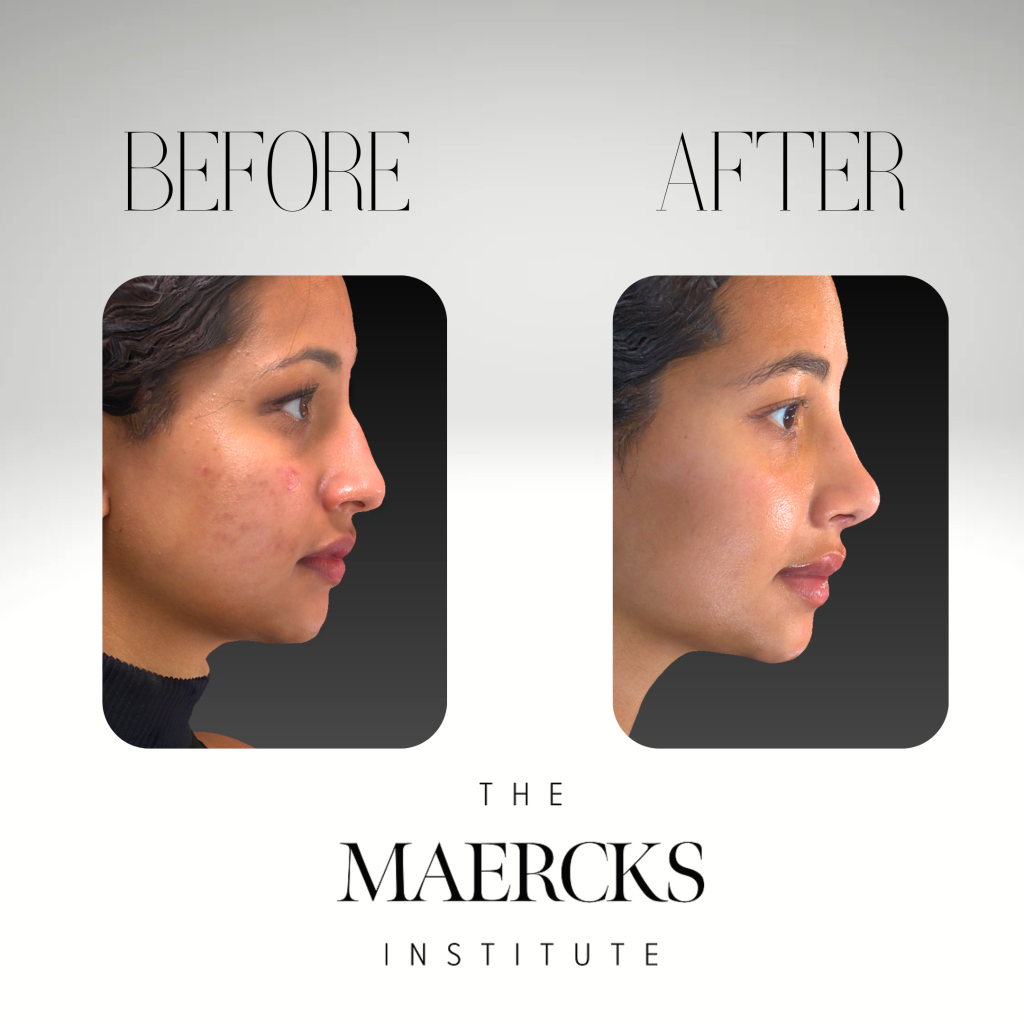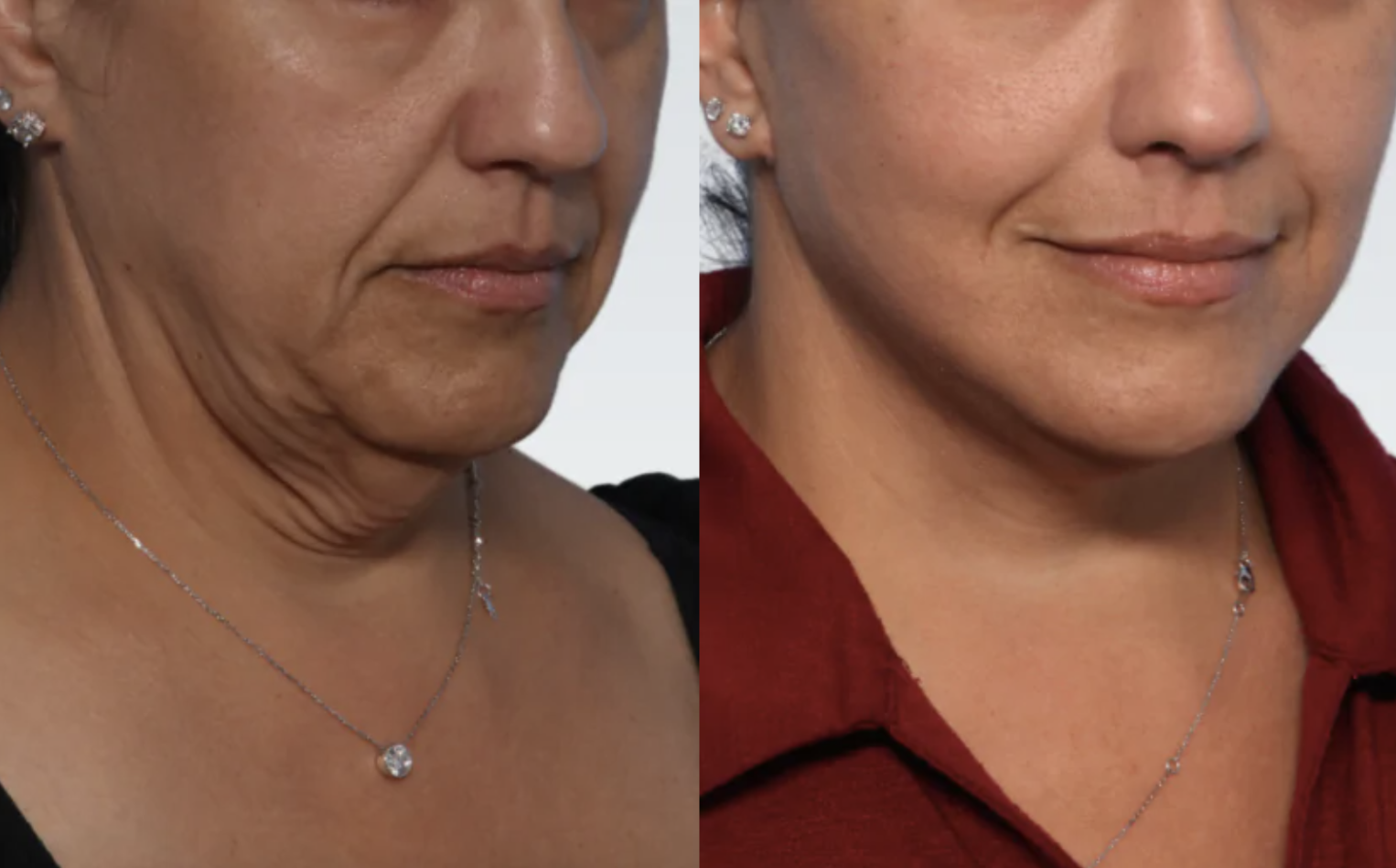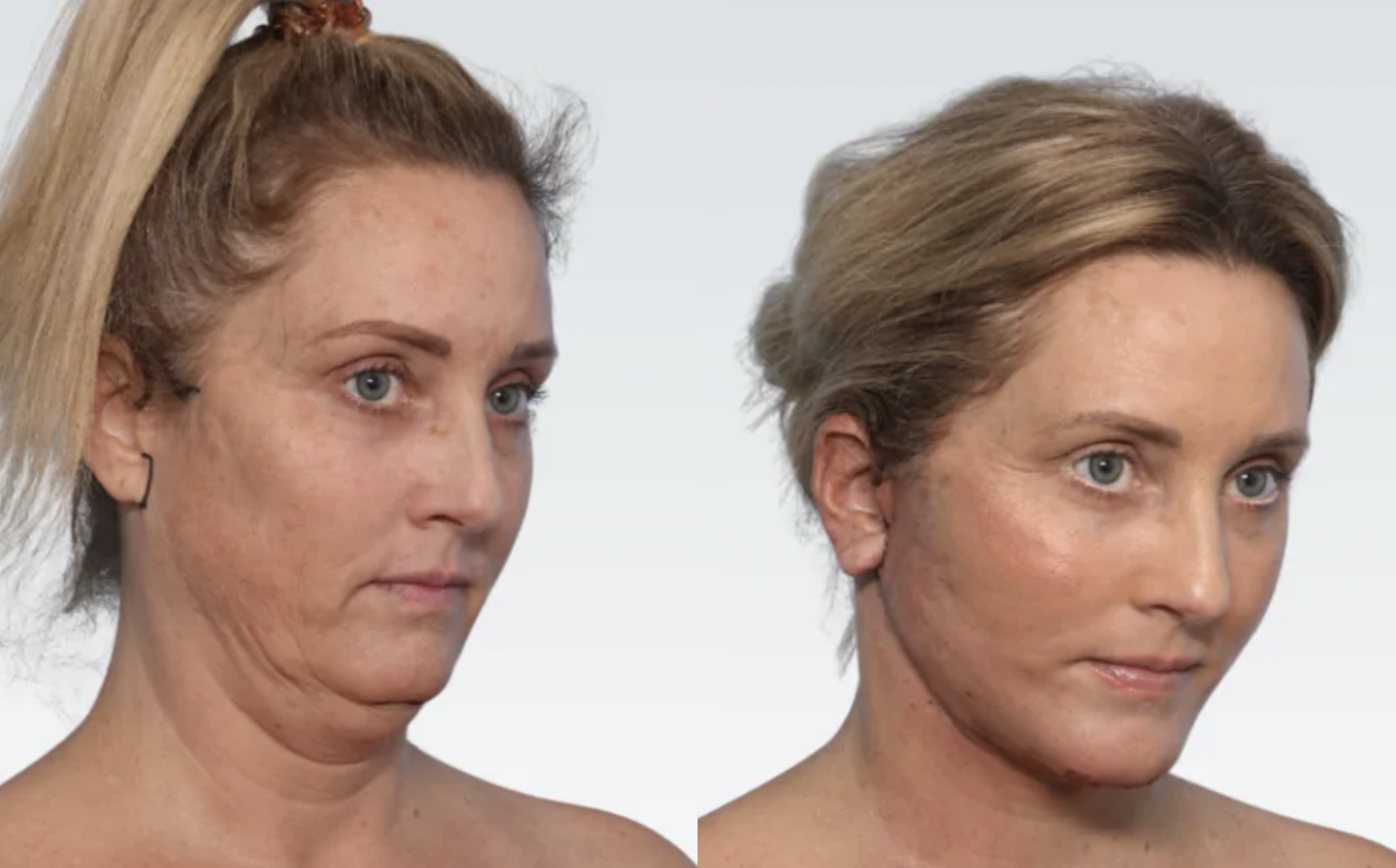Rhinoplasty
Conveniently located to serve the areas of Miami, FL

Rhinoplasty, more commonly known as a nose job, is a procedure that reshapes the nose to improve its appearance and/or functionality. The nose is an intricate structure made up of bone, cartilage, skin, and mucous membranes. Its complex anatomy includes the bridge (dorsum), nasal tip, and nostrils. Rhinoplasty can alleviate breathing difficulties linked to structural issues, and a well-shaped nose can significantly improve your facial proportions. Whether you wish to receive rhinoplasty for cosmetic or functional reasons, we can tailor your procedure to meet your needs.
Dr. Rian Maercks is a board-certified aesthetic, craniofacial, and reconstructive plastic surgeon who uses attention to detail, artistic vision, and experienced judgment in every procedure. As medical director at The Maercks Institute, he elevates the standard of patient care and safety. Since opening his surgical center in 2009, he has changed the lives of thousands of patients. He is an expert who will formulate the ideal treatment for your goals.
The Maercks Institute is a high-profile surgical center that offers a variety of advanced techniques in surgical procedures that challenge “status quo” plastic surgery by delivering personalized, natural-looking results. Here, patients are considered in a manner that is anything but cookie-cutter, and a perspective of optimizing aesthetics in the most natural way to highlight their beauty through bespoke designed interventions is utilized.
Contact our Miami office or call (305) 414-0934 to learn more!
Contents
Before and After Photos
About Rhinoplasty
Many individuals choose to undergo rhinoplasty for different reasons, such as reducing a dorsal hump, refining the nasal tip, improving nasal symmetry, or addressing congenital defects. Sometimes, patients seek functional rhinoplasty to solve breathing problems caused by structural abnormalities. Specialists performed the effective procedure more than 47,300 times in 2023. (1) Depending on your aesthetic goals and the shape of your nose, we can perform different procedures to enhance your natural features. Dr. Maercks will design a personalized treatment plan. He never performs “cookie-cutter” procedures. He always considers your unique goals, facial structure, and surgical history. A nose job can correct a wide variety of concerns, including:

- Droopy, bulbous, or upturned nasal tip
- Crooked, wide, or oversized nose
- Uneven or oversized nostrils
- Visible depression or bump in the bridge of the nasal profile
- Anatomical abnormalities, such as a deviated septum
Candidates
The best candidates for rhinoplasty are those who:
- Are unhappy with the appearance of their nose
- Have a broken nose or problems resulting from a previous rhinoplasty
- Have trouble breathing or sleeping due to a deviated septum
- Are non-smokers in good overall health
- Understand what a rhinoplasty can accomplish and have realistic expectations
If you are considering undergoing a nose job in Miami, we would love to speak with you. Contact our office or call (305) 414-0934 to schedule your initial consultation.
Personal Consultation
Dr. Maercks will meet with you before rhinoplasty to review your medical history and the nuances of rhinoplasty. He will then provide you with a profile tracing that shows you your nose’s most important aesthetic and functional features.
Dr. Maercks can combine facial fat grafting and chin enhancement procedures with rhinoplasty with a balanced approach. After creating your treatment plan, he will discuss the exact details and options for modifying it. Whether you want to undergo rhinoplasty for functional or aesthetic purposes, we can create a personalized plan to address your concerns. To learn more about our additional procedures, see the blog!
Preparation
To prepare for rhinoplasty, you will need to:
- Stop taking blood thinners
- Refrain from smoking temporarily
- Arrange for someone you trust to drive you home
- Schedule time off work so you can recover comfortably
The Maercks Approach to Rhinoplasty Procedures
Rhinoplasty is usually done on an outpatient basis. A certified anesthesiologist performs general anesthesia to ensure the patient is safe and comfortable during the procedure. The type of procedure you need will depend on your underlying anatomy. All procedures allow for minimal scarring, and we can discuss the best options for you during your consultation:
- Open Rhinoplasty: This technique involves making incisions on the underside of the nose, allowing for greater visibility and access to the nasal structures. It is typically used for more extensive modifications.
- Closed Rhinoplasty: In this method, Dr. Maercks can make hidden incisions inside the nostrils without leaving visible scars for less complex modifications. (2)
- Septoplasty: Dr. Maercks can straighten the piece of cartilage that divides the nasal cavity for improved airflow; he can also perform rhinoplasty and septoplasty during one appointment. (3)
Dr. Maercks rarely deviates from a closed approach because he can transform your nose with minimal downtime thanks to his international training and extensive experience. However, he may utilize the open approach in rare cases and complex revision rhinoplasty procedures. After making modifications to your nose he can also perform facial fat grafting and chin enhancement, if applicable.
Recovery
After surgery, rhinoplasty patients must rest at our facility until the anesthesia has completely worn off. A responsible adult will need to drive you home so you can rest. It’s common to experience bruising and swelling around the eyes after surgery. During your recovery, you will need to take your medication on time, stay hydrated, and eat soft foods while your nose heals. Most of the swelling will go down after a few weeks.
Although we recommend taking short walks, you must avoid strenuous activity for several weeks. You should closely follow the home care instructions we provide to ensure your recovery is smooth and successful. Dr. Maercks will let you know when to follow up with the office.
Results
After rhinoplasty, you can enjoy a more attractive and/or functional nose. Patients notice rhinoplasty results about two weeks after surgery, although the final results may not be visible until the nose fully heals. This can take up to a year as residual swelling dissolves and the bone heals in its new position. If you are experiencing functional issues, opening the nasal airways can make breathing easier.
Revision Rhinoplasty

Revision rhinoplasty is a nose surgery that is performed for the second time. Choosing the right surgeon is very important if you have decided to undergo revision rhinoplasty in case there isn’t much cartilage to work with or you have scar tissue.
Revision rhinoplasty addresses unsatisfactory outcomes of the first surgery. These issues can result from an inexperienced surgeon, improper healing, or scar tissue. Whatever your areas of concern may be, Dr. Maercks can help. We recommend waiting at least one year after your original nose surgery to undergo a secondary procedure.
Other Procedures
The chin is important in defining the face, neck, and jawline. Chin enhancement is a surgical procedure designed to improve the shape and size of the chin. This aesthetic enhancement can improve facial symmetry, jawline definition, and chin projection. We can take several different approaches to help you contour your jawline and achieve a more defined facial profile:
- Surgical Chin Augmentation (Mentoplasty): Dr. Maercks can place a chin implant to enhance your chin’s projection and shape in surgical chin augmentation. Implants come in various shapes and sizes, allowing for customized solutions based on individual facial structures. The surgery typically requires general anesthesia or local anesthesia with sedation.
- Non-Surgical Chin Augmentation: This approach involves using dermal fillers like hyaluronic acid. The fillers temporarily add volume to the chin to reshape it without invasive surgery or implants—results generally last six months to a year before you need a touch-up treatment.
Contact our office to learn how a strong chin can create a more attractive profile and balance your facial features, enhancing chin projection and overall facial harmony.
The Cost of Rhinoplasty in Miami
The cost of a nose job will depend on your specific treatment plan. We can provide an all-inclusive quote during your consultation. We also recommend that you contact your health insurance company ahead of time to ask if they will cover the cost.
Contact our office or call (305) 414-0934 to learn how the effective procedure can help you improve your facial aesthetics and functionality.
FAQ
Can rhinoplasty also help me address breathing issues?
Yes, we can reshape the nose to improve airflow and address breathing issues.
How do I know if rhinoplasty is a good fit for me?
If you would like to reshape your nose and enhance your appearance, rhinoplasty is likely a good fit. During your consultation, we can also discuss functional issues such as airway obstruction or a deviated septum.
How long does a rhinoplasty procedure take?
Depending on the type of procedure you need, it can take 2-3 hours.
Will I have visible scarring after rhinoplasty?
We make discreet incisions that are very easy to conceal for a natural-looking appearance.
References
- American Society of Plastic Surgeons ® Endorsed Partner. https://www.plasticsurgery.org/documents/news/statistics/2023/plastic-surgery-statistics-report-2023.pdf
- Azzawi SA, Kidd T, Shoaib T. Closed Rhinoplasty: A Single Surgeon Experience of 238 Cases over 2 Years. Indian Journal of Otolaryngology and Head & Neck Surgery. Published online August 6, 2020. doi:https://doi.org/10.1007/s12070-020-01990-y
- Tao F, Feng Y, Sun B, Wang J, Chen X, Gong J. Septoplasty Effect on the Enhancement of Airflow Distribution and Particle Deposition in Nasal Cavity: A Numerical Study. Healthcare. 2022;10(9):1702. doi:https://doi.org/10.3390/healthcare10091702










